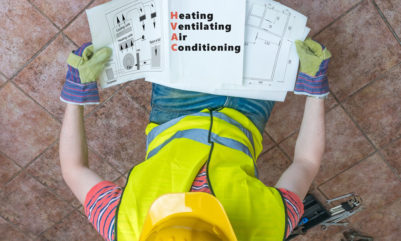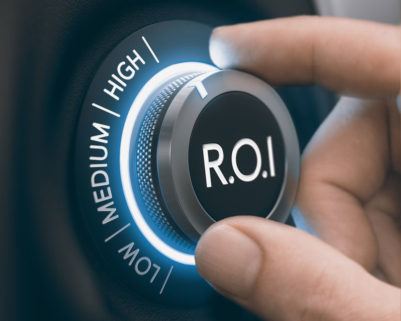15 Ways to Get Better Hospital HVAC Energy Efficiency
Heating and ventilation consume a significant proportion of the £400 million spent on energy in the UK health sector, so it makes sense to adopt energy efficient HVAC practices and technologies in hospitals.
Budgets are strained to breaking point, which ramps up pressure to find the best methods of managing HVAC more effectively. It’s a complex task as a lot of hospitals have many disparate buildings and air conditioning units, with the need to maintain high ventilation areas to lessen risks around microbial infection. Here, we’re sharing the top 15 ways to get better HVAC energy efficiency, and to deliver controllable and lower operating costs.


1. Retrofitting
Retrofitting is a cost-effective way to extend the life of a big HVAC system without putting intense pressure on capital budgets.
It’s a good way to upgrade an aging workhorse that has been well-maintained. By adding or replacing parts, it is estimated that energy use can be reduced by more than a third year-on-year.
As always, the focus will be on optimising the environmental conditions for the comfort of both patients and staff while reducing costs. Efficiencies can be easily gained through:
- Variable Speed Drives – VSDs can deliver energy savings of up to 50 percent, with ROI in six to 12 months, and can be readily deployed in non-critical areas, such as administration offices that have lower ventilation needs
- Adding demand-controlled ventilation
- Air side economisers that utilise cool exterior air
- Replacement compressors
- Condenser fan controls
2. Smart controls
Smart wireless energy management solutions are a clear way to make HVAC energy efficiency improvements. Through this, the air conditioning systems are adapted to suit staff, patient, and visitor behaviour. For example, there will be many meeting rooms and other areas in hospitals that are not occupied at all times, but the system continues to operate.
It is clearly more effective to have the air conditioning switched on when somebody is present in these rooms and automatically switched off when unoccupied. This can be easily achieved with the installation of occupancy sensors.
These are effective systems combining a door sensor with body heat detection. The system takes control of the HVAC, resetting the temperature to energy-conserving levels when the room is unoccupied for a chosen period of time.
These controls can be combined with clever energy management solutions, providing extensive data for hospital energy managers to optimise energy consumption in all areas while flagging faults for priority action.
3. Efficient insulation
Manage the HVAC air resource more effectively through optimum insulation. By containing the conditioned cool and heated air through properly insulated windows, ceilings, floors, and walls, energy costs are more effectively controlled.
For reference, how effectively materials insulate an area is measured by the “r value” – the higher this is, the more it traps HVAC air. With this in mind, check ducts, pipes and other outlets that could be a drain on energy.


4. Upgrade HVAC equipment
There is a definite benefit in opting for a full HVAC upgrade on a system installed more than a decade ago, with a far quicker ROI than when the old plant was installed. The newer models, governed by EU energy policy, have far better Seasonal Energy Efficiency Ratio (SEER) and Energy Efficiency Ratio (EER).
For reference, SEER is the ratio of cooling output in British thermal units (BTU) divided by electricity usage in kilowatt hours, and the higher value the better yours is. The benefit of SEER is that it uses real seasonal cooling measures rather than lab conditions. EER, on the other hand, does use strict lab conditions for the calculations.
5. Optimise airflow
Effective housekeeping is a simple way of ensuring the most energy efficient HVAC systems with a positive effect on overall energy consumption. This can be done by keeping your HVAC clean and clear of dust, debris and leaf-fall. Furniture should not block ducts and vents.
6. Regular maintenance
It’s imperative that there is a detailed and regular maintenance programme for the most efficient HVAC system, based on seasonal changes. Well maintained equipment lasts longer with fewer faults and this will help to spread the cost of repairs. There can be a benefit in adding a coil bypass on both the heating and cooling coils. When the coil is not in operation, a bypass damper opens to allow air to pass through with a substantially lower pressure drop. This can reduce fan energy significantly.
7. Replacement routines
Regular HVAC inspection helps to identify damaged or missing insulation on pipes and ducts while highlighting any need to repair leaking air ducts. It can also aid in spotting any small issues and fixing them before they become larger problems.
8. Regular cleaning
As part of the overall maintenance, make sure to clean all heating units, heating coils, and heat exchangers. This will improve efficiency and help extend their lifetime.
9. Identify structural improvements
Where appropriate and feasible, an energy audit focused on the building design can pinpoint areas where energy is being used inefficiently. For example, it might be that an agile redesign of part of the hospital will deliver ongoing energy savings, through better insulation, door seals, and effective airflow.
10. Check the thermostat
Calibrate, check, and adjust thermostats to accurately heat and cool different building zones. Consider the optimum temperature ranges needed for patients and staff. People are fairly tolerant of heat changes up to two or three degrees Celsius. It could be that having a policy of setting programmable thermostat levels to mirror more closely the outside temperatures will not have any negative impact but will deliver savings.
11. Monitor and change air filters
Regular checks on air filters will ensure that the HVAC system is working to maximum efficiency. Clogged filters strain the equipment, which consumes more power while failing to prevent dust build-up on motors and fan blades. Regular change extends the life of your equipment at a lower cost. Increase the filter cross-sectional area (angled filter bags, pleated filters) to provide more energy-efficient filtration
12. Turn off electrical equipment
Good energy management means turning off a range of electrical equipment when not in use. This includes computers, media systems, and exercise machines that generate heat, putting more demands on your HVAC. This will also bring the added bonus of lowering energy costs.
13. Variable Refrigerant Flow option
Another option when planning an HVAC upgrade is to assess the benefits of Variable Refrigerant Flow (VRF). This can be a relatively simple option that offers individually controlled zones in a building for maximum energy efficiency with lower maintenance costs.
VRF operates with variable speed compressors while also reducing or eliminating ductwork, and cutting the cost of piping, pumps, and fans.
14. Shut down unneeded equipment
Manage equipment more effectively by installing control interlocks that turn off HVAC system pumps when no output is needed.
15. Make HVAC education a priority
Staff, patients, and visitors can help to support the drive for energy savings through a focus on HVAC. It’s important to keep them up to date with the cost-saving campaigns and the ways that these are being measured.
Employees can feel more positive and empowered through education initiatives. These should be highlight how they can make a big difference simply by turning off equipment, lights, and other electrical appliances when not in use, as well as checking thermostats, for example.
With HVAC costs a constant and increasing burden on hospital budgets, the focus on maximum efficiency is essential through effective, sustainable and long-term planning.